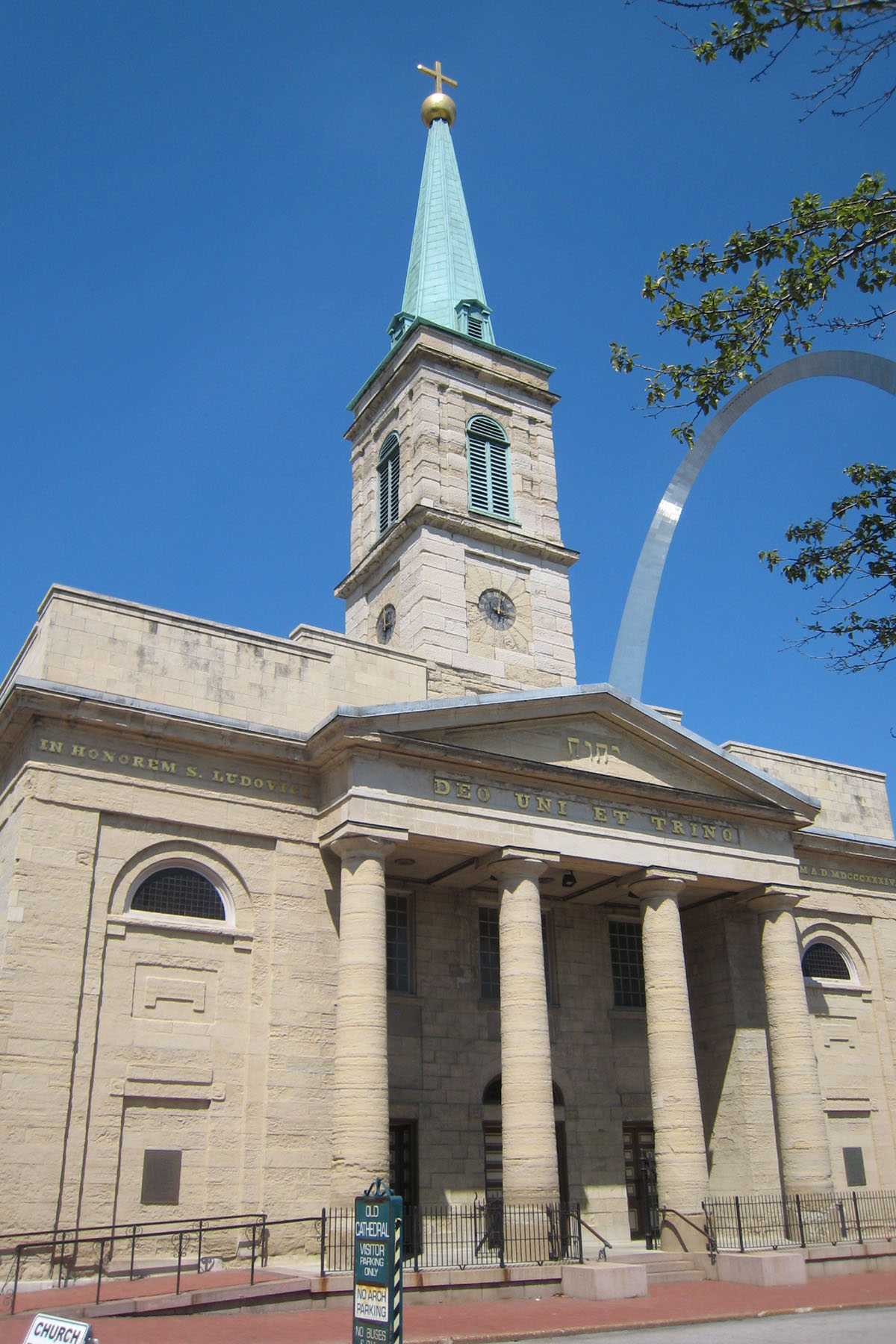Basilica of St. Louis IX, King of France (The Old Cathedral)
Genealogical DataThe following indexes/records from this congregation are available: Baptisms from 1763–about 1840 (These baptisms were first published in the 1970 St. Louis Genealogical Society Quarterly, volume 3, numbers 1–4, pages 6–8, 30–32, 56–59, and 83–85. Baptisms from 1765–1840 (pages 1 through 50) (These baptisms, which have some data from this church and Sts. Mary and Joseph in Carondelet combined, were first published in a St. Louis Genealogical Society book: Catholic Baptisms, St. Louis, Missouri, 1765–1840, (1998) Baptisms from 1765–1840 (pages 51 through 57) (These baptisms, which have some data from this church and Sts. Mary and Joseph in Carondelet combined, were first published in a St. Louis Genealogical Society book: Catholic Baptisms, St. Louis, Missouri, 1765–1840, (1998) Baptisms from 1765–1840 (pages 58 through 84) (These baptisms, which have some data from this church and Sts. Mary and Joseph in Carondelet combined, were first published in a St. Louis Genealogical Society book: Catholic Baptisms, St. Louis, Missouri, 1765–1840, (1998) Marriages from 1774–1840 (These marriages, which have some data from this church and Sts. Mary and Joseph combined, were first published in a St. Louis Genealogical Society book: Catholic Marriages, 1774–1840, 3rd edition, 1996.) HistoryEstablished 1764; still open in 2016 St. Louis was established in 1763. The settlers built a one-room log structure in 1764 as the first permanent church in St. Louis and named it for the king of France, Louis IX. In 1776, they replaced this structure with a larger white-birch frame building as the young city began to grow. Until 1816, this church served as the only church where the settlers could worship. In 1818, the church began construction of a new brick building. They never completed the building because they decided to build a new stone cathedral. By 1831, the fifty-five-year old church was deteriorating and could not accommodate the growing parish. The Catholic Archdiocese decided to build a new church rather than replace the old structure. Bishop Joseph Rosati dedicated the new cathedral in 1834. However, it was not until 1843, under the direction of Bishop Peter R. Kenrick, that they were able to complete the construction as Bishop Rosati had originally planned. The resulting structure is now the oldest standing building in the city of St. Louis and was the first cathedral west of the Mississippi River. In 1914, the church lost its designation as a cathedral when the Archdiocese opened the new cathedral on Lindell Boulevard. |
|
|
After World War I, the area around the old church began to decline and soon fell into decay. In 1933, Mayor Bernard F. Dickmann proposed an ambitious plan to renovate the downtown area. After President Franklin Roosevelt authorized a new national park, construction began to clear the area to establish the Jefferson National Expansion Memorial. Fortunately, the plan preserved the Old Cathedral which was the only building saved. In 1958, Cardinal Joseph Ritter commissioned a renovation of the 1834 church. In 1961, Pope John XXIII decreed that the Church of St. Louis IX, King of France become a Basilica, known officially as the Basilica of St. Louis, King of France, giving it worldwide recognition. People commonly refer to the historic structure as the Old Cathedral. In 2008, the Archdiocese renovated the building once more, to meet national historic landmark standards and to update the rectory and museum addition added in 1960. Address: 209 Walnut Street, St. Louis, Missouri 63102 Telephone: 314-231-3250 Website: www.oldcathedralstl.org/ GPS (Latitude, Longitude): 38.624087,-90.1893725 View Map |
|
The congregation established its first burial ground in back of the original log cabin at Walnut and Third Streets. There was a known Catholic cemetery on Market Street, between Broadway and Second Street (now part of the Arch grounds). Bishop Rosati established still another Catholic cemetery on Franklin Avenue and Seventh Street around 1831. Numerous burials filled the cemetery space after the terrible cholera outbreak in 1847. The city passed an ordinance in 1879 to close all city cemeteries. The church then moved most of the burials to Calvary Cemetery. As a consequence, remains were moved several times from the old city cemeteries and many were lost over the years.
Access Cathedral Basilica of St. Louis here.
Access the Old Catholic Cemetery here.
Access St. Louis King of France cemetery here.
Last modified:
06-Jan-2023 11:13
